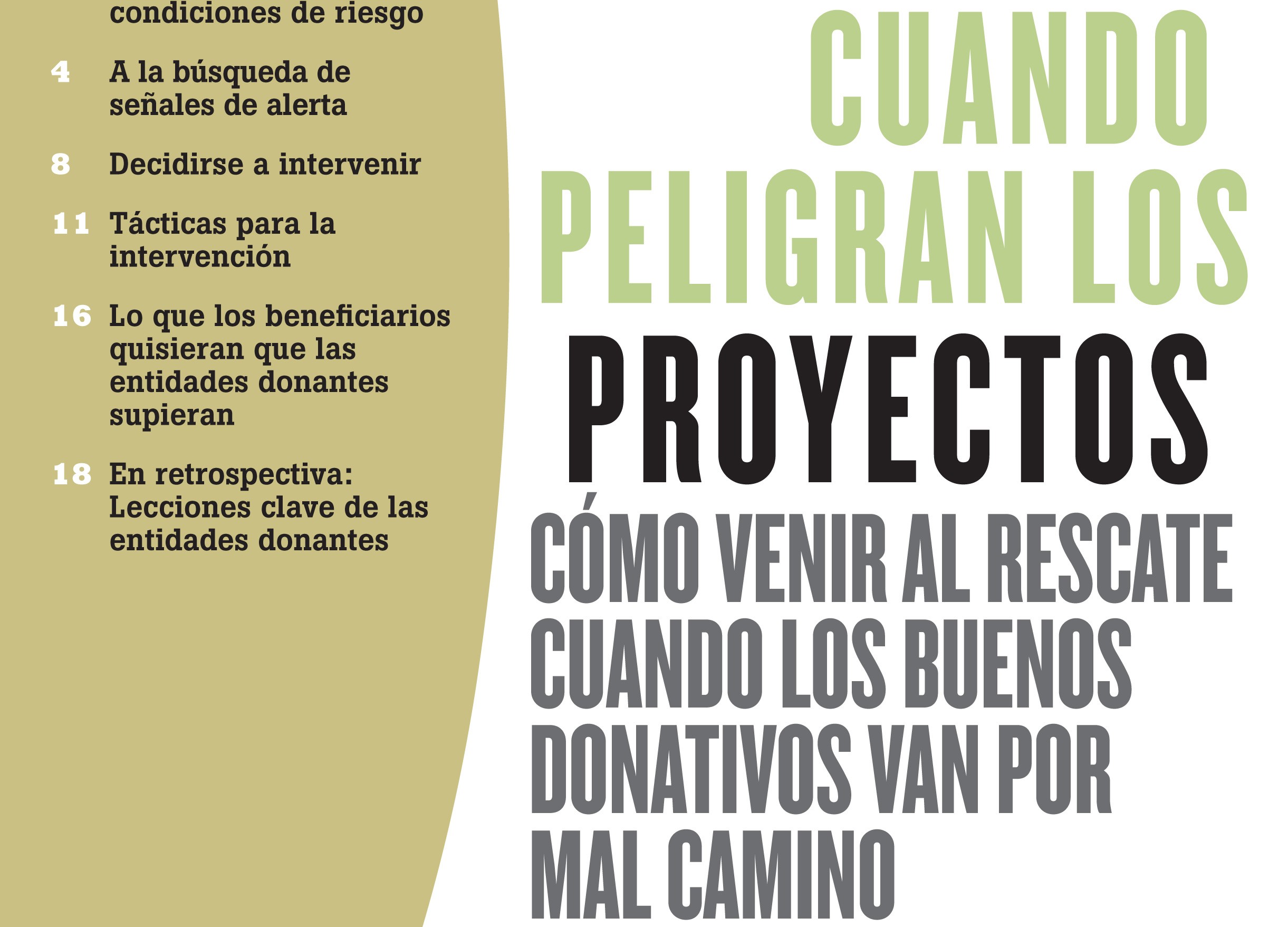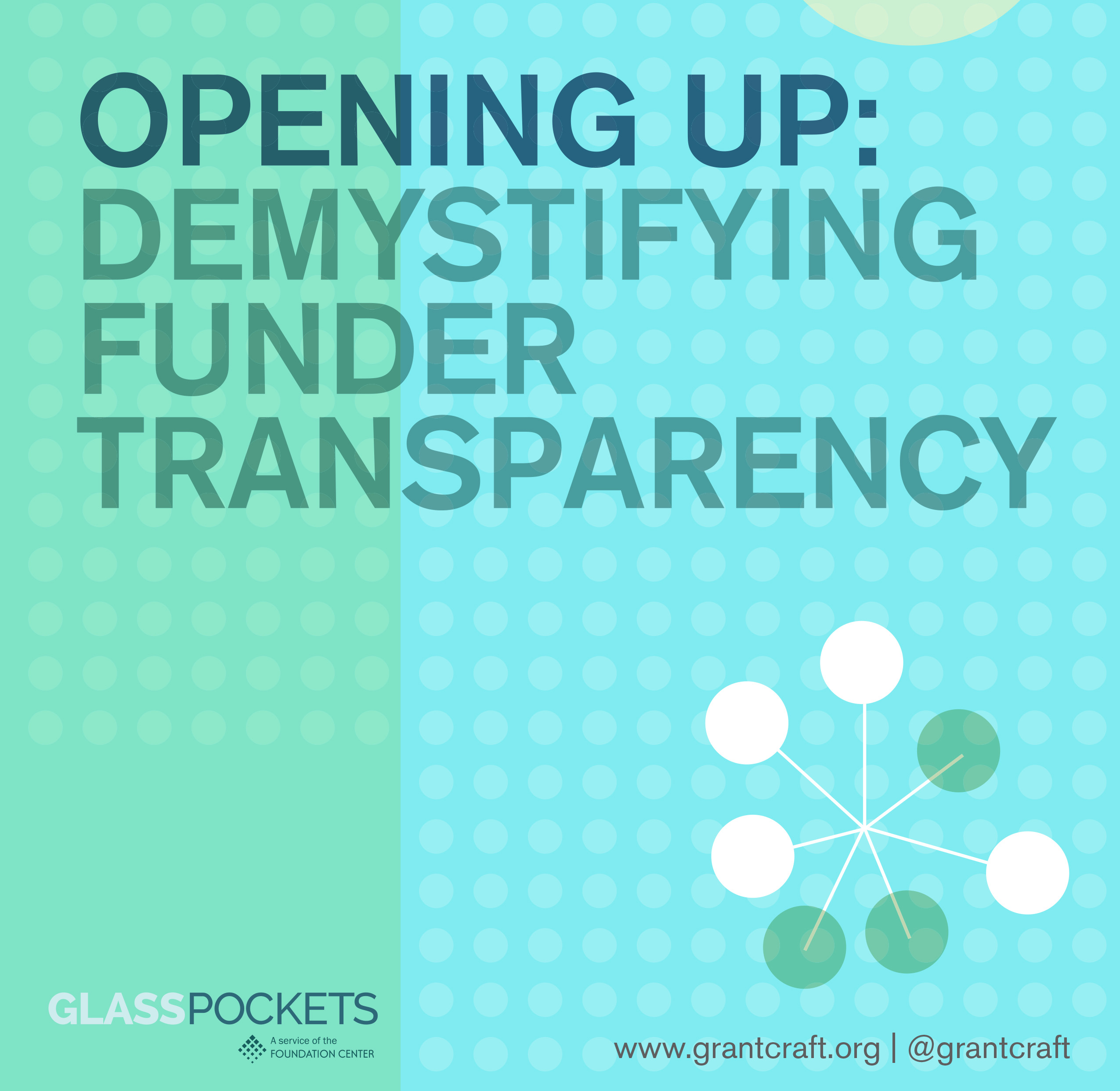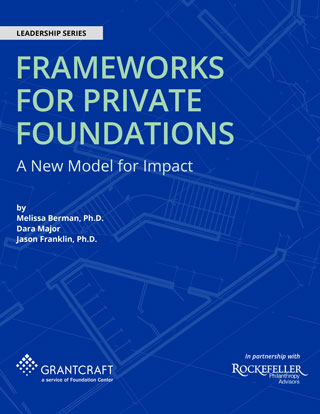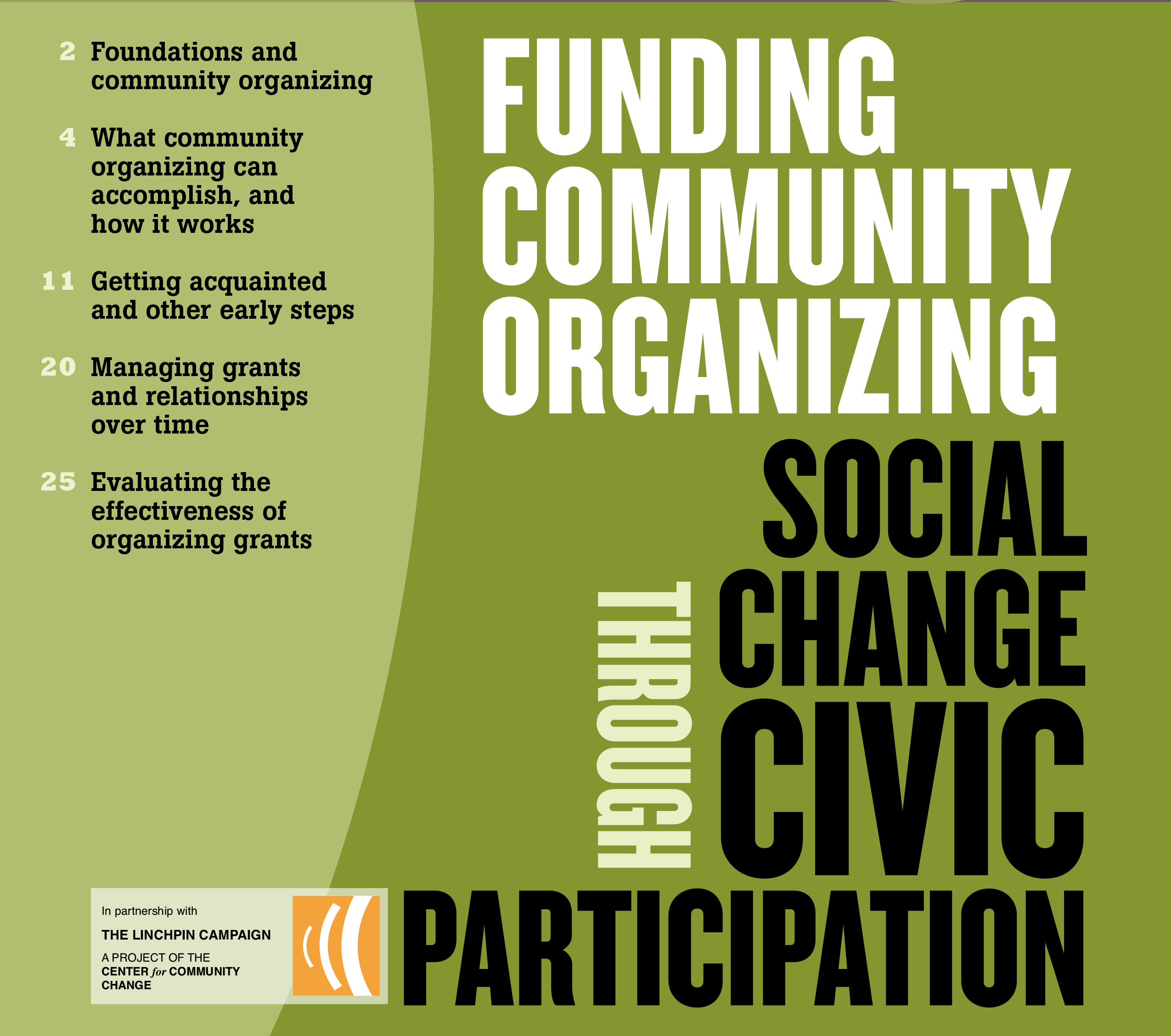When Projects Flounder Coming to the Rescue When Good Grants Go Astray
What warning signs might alert you that a project is floundering? In this guide, grant makers recount their experiences with troubled projects and tell how they responded - or how they wish they'd responded. With the benefit of hindsight, veterans describe what they learned and offer advice on the most effective and timely way to handle distress signals.
Highlights
- Recognizing the warning signs
- Deciding whether to intervene
- Shaping your response to the situation
What's in the Guide?
- Introduction: Every floundering grant flounders in its own way, and each one calls more for judgment than for technique alone.
- Varieties of Floundering: Some grants flounder just because the program design or implementation plan had some flaws. Those tend to be the easier ones to fix. The other two types of troubled grants are usually harder: those where the grantee has organizational or management problems, and those where the grantee and grantmaker have different (or even conflicting) values. In this guide, a group of grantmakers share personal experiences with each type of floundering grant.
- Looking for Warning Signs: A few warning signs can help grantmakers distinguish between fleeting or momentary problems and those that point to greater trouble ahead. When grantees turn up with chronic cash flow problems time after time, or when they start to engage in a desperate chase for dollars, or seize on dubious funding breakthroughs (poorly linked to their core mission), something deeper is likely to be wrong. When you sense that the grantee's board of directors is inattentive, or its founder suffers from major blind spots, you may be seeing signs of trouble. Most of all, trust your own inner feelings when they start to nag at you — even if the nagging isn't yet specific or clear. Several veterans recall the moment when they saw the "trouble" signals begin to flash. We include a miniCase on page 6 of the guide.
- Deciding to Intervene: When a grant starts to flounder, grantmakers must choose whether to treat it as a failure or to stick with it and correct the problems. When grants are large or strategically important, when the funder feels a special obligation to the grantee, or when the grantmaker represents a foundation that doesn't mind intervening in grantees' affairs, it may be particularly important — even necessary — to rescue a troubled grant, rather than writing it off. This section describes how some funders make that decision. We include a miniCase on page 9 of the guide.
- Tactics for Intervening: If you decide to try to rescue a floundering project, grantmakers argue that it helps to get help from your colleagues and superiors, from other funders, and from consultants — but also to stay involved yourself. They also advise that you make the issues institutional, not personal, to avoid provoking a defensive or evasive response from the grantee and from yourself. In some Cases, it helps to engage the grantee's board. But above all, be sure to be aware of the power imbalance, and use your power judiciously. While you're at it, you can try to create opportunities for learning so the next troubled organization or grantmaker might benefit from your experience. We include a miniCase on page 13 of the guide.
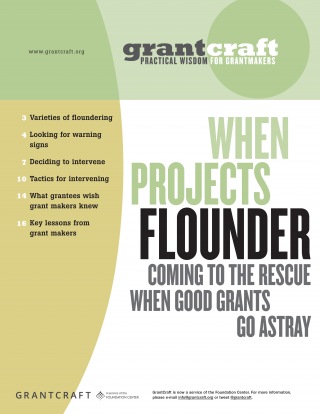
Categories
Content type
-
Link to Funding Community Organizing
Lessons from Grantmakers on When Projects Flounder
What did grantmakers who contributed to this guide most commonly wish they could go back and do over? Almost all of them expressed regrets about due diligence — which would have enabled them to steer away from trouble, or to be better prepared for it if they were still committed to the grant.
Read more -
Link to Funding Community Organizing
Deciding to Intervene: When the Foundation Needs the Grantee
Strategic importance of the grant: While every grant is made in the hope that it will make an important difference, some grants are obviously more important than others to the grantmaker’s strategy and therefore warrant more attention.
Read more -
Link to Funding Community Organizing
Intervention Tactics
Don’t go it alone. Given how difficult it can be to find the right intervention strategy, it can be especially helpful to involve colleagues in your assessment of the situation and review of options. They can act as sounding boards and provide some perspective if you’re in danger of underestimating or overestimating the gravity of the problem.
Read more -
Link to Funding Community Organizing
Talking Past Each Other: Conflicting Strategies
Misunderstood and conflicting strategies have their roots in miscommunication — as grantmaker and grantee misunderstand each other’s underlying intentions, make assumptions about their compatibility, or withhold nagging doubts about the prospects for the grant. And since the trouble is really one of conflicting judgments or preferences about strategy — not necessarily a problem of performance — the solution requires a new commitment to thoughtful dialogue.
Read more -
Link to Funding Community Organizing
What Grantees Wish Grantmakers Knew: Work on the Underlying Relationship
- Work on the underlying relationship.
- Encourage candor.
- Don't make it solely a business relationship.
-
Link to Funding Community Organizing
What Grantees Wish Grantmakers Knew: Avoid Mixed Messages
- Problems are stigmatized.
- Help-seekers can be punished.
- Don't be too polite.
-
Link to Funding Community Organizing
Deciding to Intervene: General Approaches
Large-scale grants: While most grantmakers can live with the reality that not every grant will lead to flawless work, grantmakers who faced the possibility of an especially large flounder understandably felt they had to get involved.
Read more -
Link to Funding Community Organizing
Trust Your Gut
Many grantmakers sensed trouble even in the absence of clear warning signs, describing “nagging feelings, uneasiness, or a sense of foreboding.” In most cases, the nagging feelings were followed not by program or organizational problems — but by conflicts over strategy or values.
Read more -
Link to Funding Community Organizing
Floundering Warning Sign: Founder Blindspots
Founders of nonprofit organizations are often rightly credited for their vision and determination in molding a mission into an organization, and almost as often found to be ill-suited for the job of running that nonprofit over time.
Read more -
Link to Funding Community Organizing
Floundering Warning Signs
Chronic cash-flow problems: Most nonprofits, especially small or new ones, have limited cash reserves and high uncertainty about the timing and sources of revenues, so a reasonable grantmaker will not take occasional cash-flow problems as a sign of financial distress. But chronic cash-flow problems are almost certainly a sign of deeper trouble.
Read more
What warning signs might alert you that a project is floundering? In this guide, grant makers recount their experiences with troubled projects and tell how they responded - or how they wish they'd responded. With the benefit of hindsight, veterans describe what they learned and offer advice on the most effective and timely way to handle distress signals.
Highlights
- Recognizing the warning signs
- Deciding whether to intervene
- Shaping your response to the situation
What's in the Guide?
- Introduction: Every floundering grant flounders in its own way, and each one calls more for judgment than for technique alone.
- Varieties of Floundering: Some grants flounder just because the program design or implementation plan had some flaws. Those tend to be the easier ones to fix. The other two types of troubled grants are usually harder: those where the grantee has organizational or management problems, and those where the grantee and grantmaker have different (or even conflicting) values. In this guide, a group of grantmakers share personal experiences with each type of floundering grant.
- Looking for Warning Signs: A few warning signs can help grantmakers distinguish between fleeting or momentary problems and those that point to greater trouble ahead. When grantees turn up with chronic cash flow problems time after time, or when they start to engage in a desperate chase for dollars, or seize on dubious funding breakthroughs (poorly linked to their core mission), something deeper is likely to be wrong. When you sense that the grantee's board of directors is inattentive, or its founder suffers from major blind spots, you may be seeing signs of trouble. Most of all, trust your own inner feelings when they start to nag at you — even if the nagging isn't yet specific or clear. Several veterans recall the moment when they saw the "trouble" signals begin to flash. We include a miniCase on page 6 of the guide.
- Deciding to Intervene: When a grant starts to flounder, grantmakers must choose whether to treat it as a failure or to stick with it and correct the problems. When grants are large or strategically important, when the funder feels a special obligation to the grantee, or when the grantmaker represents a foundation that doesn't mind intervening in grantees' affairs, it may be particularly important — even necessary — to rescue a troubled grant, rather than writing it off. This section describes how some funders make that decision. We include a miniCase on page 9 of the guide.
- Tactics for Intervening: If you decide to try to rescue a floundering project, grantmakers argue that it helps to get help from your colleagues and superiors, from other funders, and from consultants — but also to stay involved yourself. They also advise that you make the issues institutional, not personal, to avoid provoking a defensive or evasive response from the grantee and from yourself. In some Cases, it helps to engage the grantee's board. But above all, be sure to be aware of the power imbalance, and use your power judiciously. While you're at it, you can try to create opportunities for learning so the next troubled organization or grantmaker might benefit from your experience. We include a miniCase on page 13 of the guide.

